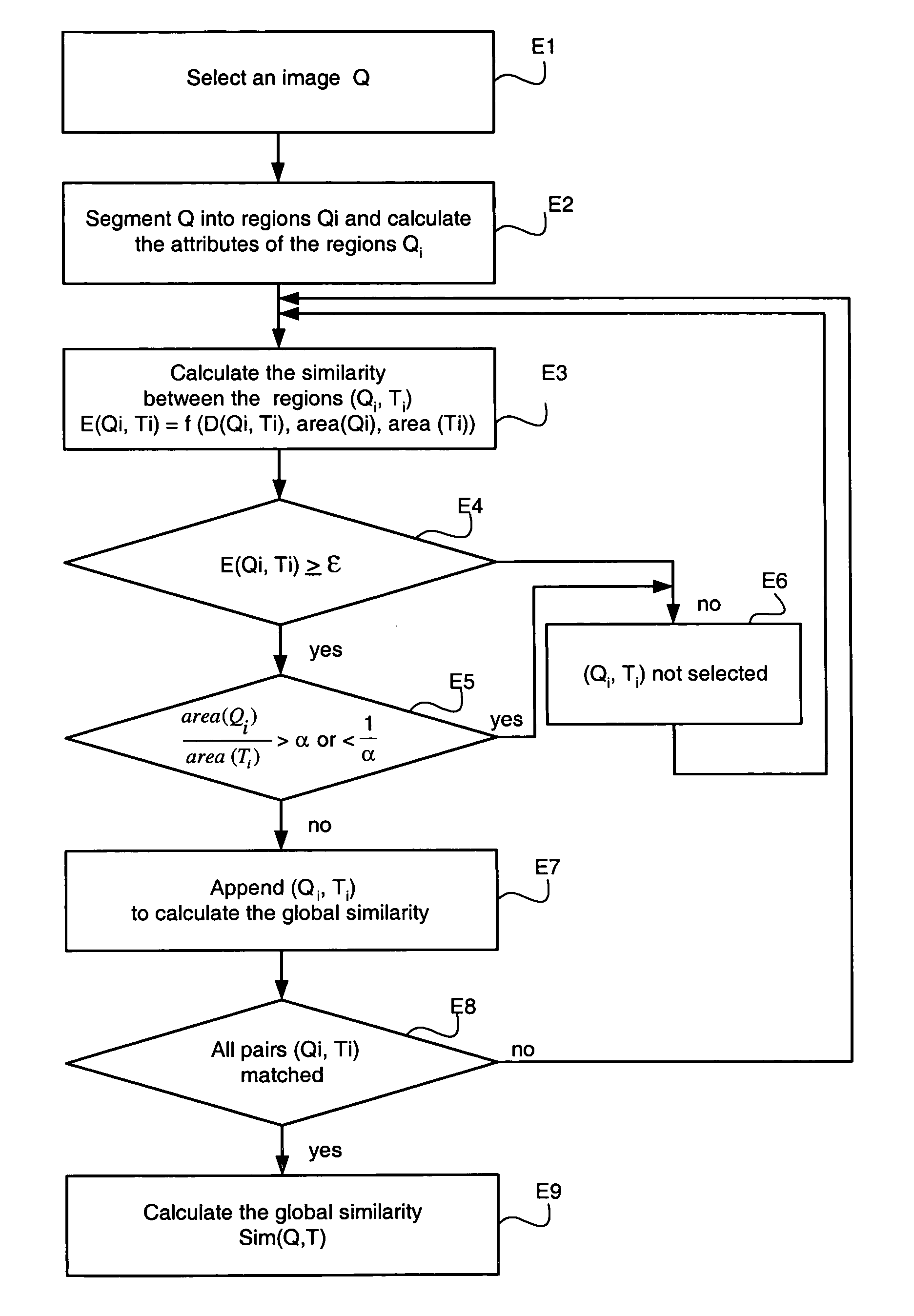Method and device for measuring visual similarity
a visual similarity and similarity technology, applied in image data processing, instruments, digital data processing details, etc., can solve the problems of reducing the cost of computation time, and reducing the complexity of the calculation of similarity
- Summary
- Abstract
- Description
- Claims
- Application Information
AI Technical Summary
Benefits of technology
Problems solved by technology
Method used
Image
Examples
Embodiment Construction
[0037]FIG. 1 represents an example of decomposing an image Q called the decomposed model image into Q regions Qi. The image Q represents the example image submitted to the device according to the invention and for which the device must return similar images.
[0038] The image Q is an image divided into regions of any shape as opposed to a division into a square grid. The division into regions Qi corresponds to a division according to objects, or according to subparts of these objects, represented on the image. These subparts are obtained via a segmentation algorithm commonly employed by the person skilled in the art.
[0039] The image T, called the target image, represents an image of a database comprising images whose visual similarity with the selected image Q is searched for. The images of the database such as T, are also decomposed into regions using the same method of segmentation as the image Q.
[0040] The image Q can be an image proposed by the user or an image itself emanating...
PUM
 Login to View More
Login to View More Abstract
Description
Claims
Application Information
 Login to View More
Login to View More - R&D
- Intellectual Property
- Life Sciences
- Materials
- Tech Scout
- Unparalleled Data Quality
- Higher Quality Content
- 60% Fewer Hallucinations
Browse by: Latest US Patents, China's latest patents, Technical Efficacy Thesaurus, Application Domain, Technology Topic, Popular Technical Reports.
© 2025 PatSnap. All rights reserved.Legal|Privacy policy|Modern Slavery Act Transparency Statement|Sitemap|About US| Contact US: help@patsnap.com



